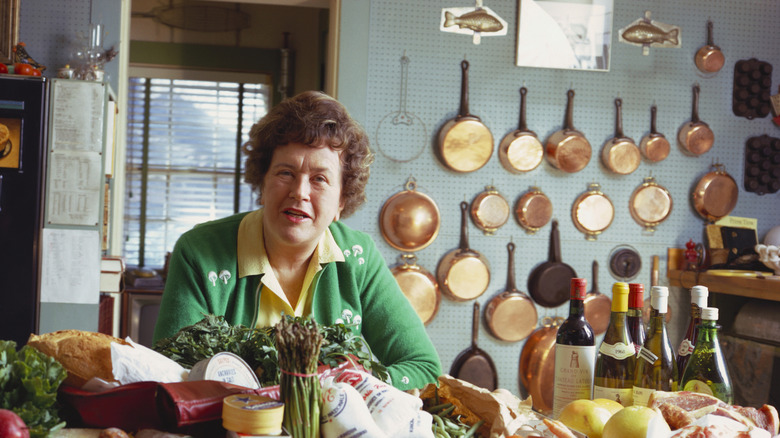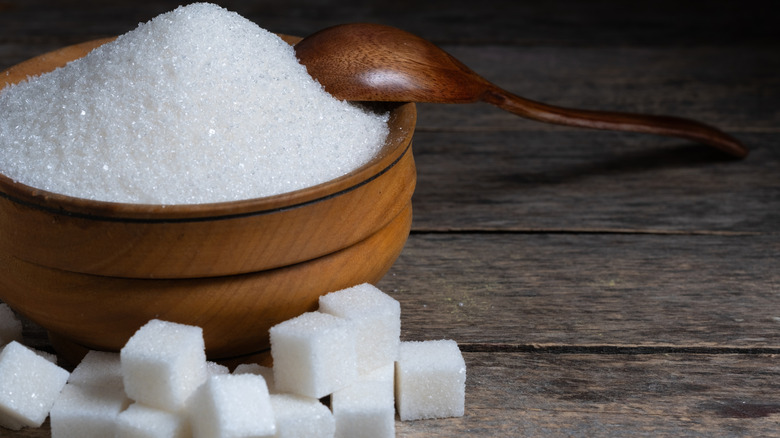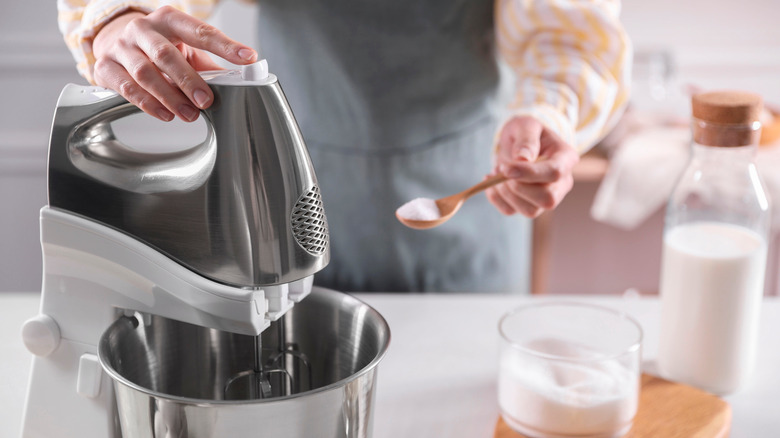The Sweet Addition That Makes Julia Child's Pot Pie So Irresistible
One thing you'll never fail to hear about Julia Child's pot pies is how irresistibly flaky and tender they turn out to be. This lovely texture is often attributed to the three main ingredients in any pastry dough and their ratios: Flour, fat, and water. While this is true, other elements added in smaller amounts can influence the resulting texture just as much as the main ingredients. Julia Child must have been aware of this and used it to her advantage. Her recipe for pie crust includes shortening, ice water, and an addition that elevates her chicken pot pie to sweet, irresistible heights: Sugar.
Most people may think twice before adding sugar to a chicken pot pie recipe because it seems contradictory. A sweet ingredient in a savory dish threatens to undermine the salty element one craves in a chicken pie. However, sugar does way more for baked goods than making them sweet, especially when exposed to heat. Sugar also alters the texture, appearance, and consistency of baked goods, so you will notice a difference when you omit it from a recipe like Julia Child's chicken pot pie. Despite her recipe including only half a teaspoon of sugar, this small addition is what makes her dish stand out for all the right reasons.
Sugar's numerous roles in Julia Child's pot pie crust
Since flavor is a major concern when adding sugar, let's clarify how half a teaspoon affects the taste. Along with salt, sugar balances the flavor of fat and flour in a pie crust so that it doesn't taste too starchy. This involves the Maillard reaction, where heat alters sugar so that it enhances the final aromas and taste of the pie. Overall, the flavor improves with a sprinkle of sugar.
Sugar also acts as a tenderizer by adding moisture and binding with gluten proteins so that the crust is less chewy and more tender. It's no surprise, then, that Julia Child's pot pie is always a hit. The addition of sugar can make all the difference between a drier pot pie crust and a tender one — and removing it can alter the pie significantly.
That golden color crowning the pot pie is also due to sugar. The Maillard reaction contributes to browning, and along with caramelization, these processes deepen the color of sugar, resulting in a beautiful, golden pie crust. So don't be deceived by the small amount added; omitting sugar from Julia Child's pot pie can lead to a pale crust with less appeal.
A sprinkle of sugar is really all you need
As we know, sugar isn't only for sweetening food, and the reason Julia Child's recipe for pot pie works is because it incorporates just a small amount. If sugar were added in large quantities, the crust would turn out sweet and incompatible with the savory filling. The key is to watch the quantity added. You may be tempted to add more sugar for better results, but doing so compromises the flavor, texture, and color of your pie's crust.
Using high amounts of sugar, for example, half a cup with half the flour called for in Julia Child's pot pie recipe, is reminiscent of a pâte sablée or 'sweet tart dough.' This crust has a texture that goes beyond the tender and flaky one we love in a pot pie; it is more crumbly, with a brittle crust similar to shortbread dough or cookies, along with unwanted sweetness. So, avoid adding excess sugar in hopes of achieving a darker, more appealing pie crust. If more of that golden hue is what you're aiming for, you're better off using a plain egg wash or one of these pie crust washes along with a sprinkle of sugar in the crust ingredients for your desired results.


